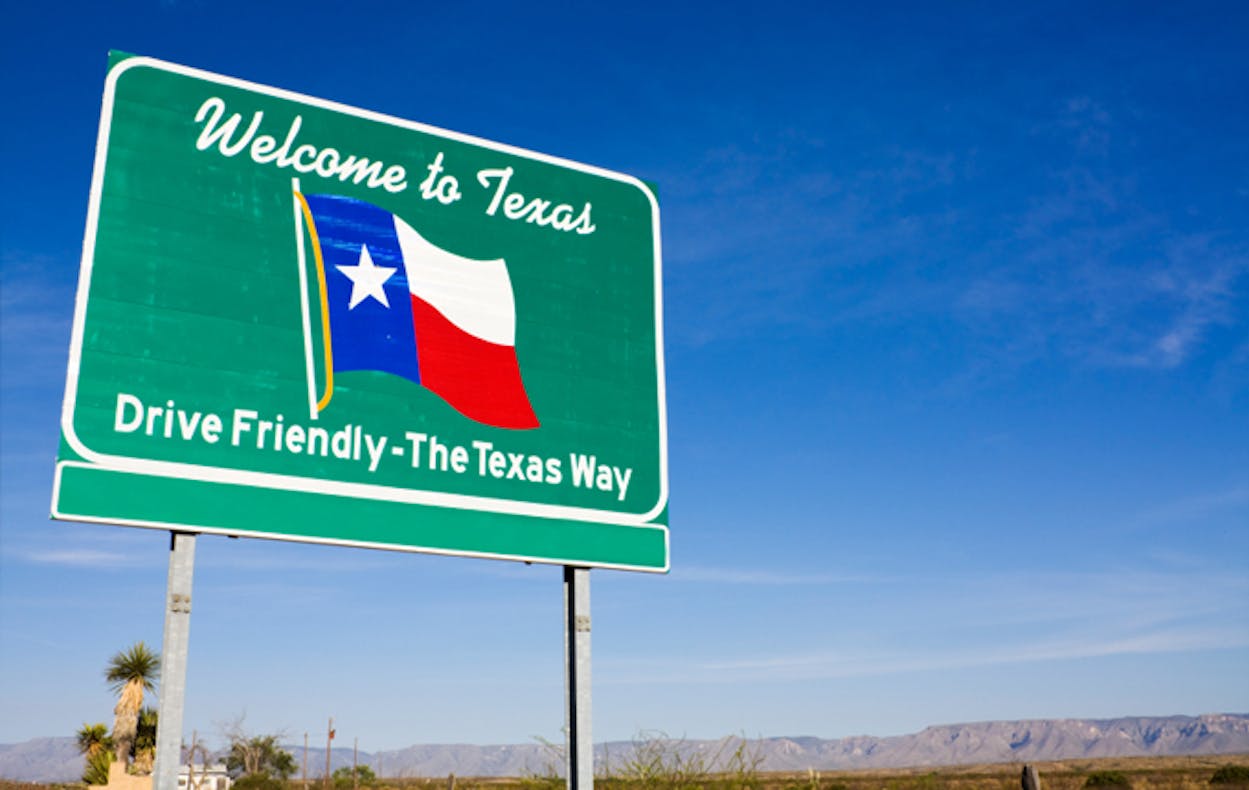Rick Perry beckoned Californians to come here. Greg Abbott appealed to New Yorkers. While there’s not yet proof that their bait was alluring, the fact is that Texas cities are leading the nation in population growth and employment.
According to a statement released by the United States Census Bureau on March 14, the fastest growing metropolitan area in the nation is Midland, Texas. The ranking was determined by the percentage of change in population between July 2011 and July 2012, and Midland, which was also recently named the the second richest city in America, experienced a 4.6 percent increase. Three of the top 10 fastest-growing cities are in the Lone Star State. Behind Midland was nearby Odessa at no. 5 and the Austin-Round Rock area at no. 7.
Texas cities also took the top spots in terms of increase in sheer numbers. The Dallas-Fort Worth-Arlington area topped the list with 131,879 new residents between the summers of 2011 and 2012. Right behind DFW in the no.2 spot, is the Houston-The Woodlands-Sugarland area, which added 125,185 new people in the same period. Both Texas metroplexes beat out Los Angeles and New York City, which came in at no.3 and 4, respectively. Harris County also took the top spot for largest numeric increase among counties across the country. Eleven of the top 50 fastest growing counties are in Texas.
What is driving all this growth? The answer would appear to be employment. According to a report issued by Forbes Magazine last month, Texas dominates its Top Ten list of American cities with good jobs. Dallas and Houston again take the top two spots, with Austin and Fort Worth following closely at no.3 and 4. San Antonio also made it onto the list at no. 6.
Forbes based the list upon data on the 100 largest metropolitan areas obtained from Moody’s Analytics, which takes much of its information directly from the Bureau of Labor Statistics. The ranking was determined by recent and expected job growth, current unemployment rate, current and expected per-capita income, and other factors. The methodology behind the list is detailed here.
Where are all these jobs coming from? Thomas Mesenbourg, a senior advisor for the U.S. Census Bureau, believes the answer may lie deep underground. “[T]he energy boom is playing a role,” said Mesenbourg. “For instance, the Permian Basin, located primarily in West Texas, and North Dakota accounted for almost half of the total U.S. growth in firms that mine or extract oil and gas, during a recent one-year period.”
That a state famous for its “black gold” could again be reaping the benefits of an energy boom is perhaps not surprising. Not everyone is so quick to agree that fossil fuels are solely to thank for Texas’s economic blossoming. In an interview with TheBlaze, Governor Perry made the case that Texas’s greatness is about more than just oil and gas. Perry explains that the oil and natural gas industry makes up less than 10 percent of the gross state product, and that Texas’s business-friendly legislation is what makes it so attractive. Perry said:
We have created a climate here that is the envy of the rest of the country. And it is because of policies that have been put into place that removed hurdles for businessmen and women so that they know they can expend their capital and have a chance to earn a return on investment. They hire people who in turn create the wealth and drive the economy in Texas.
Texas is the best place in the nation to do business, according to public figures like Perry, and these recent reports seem to agree. The unemployment rate in Texas was 6.3 percent in January 2013, down from the national average of 7.9 percent, wrote Jason Howerton for The Blaze.com. Regardless of the reasons, Texas cities are booming, with people streaming into its metropolises and its small West Texas towns alike.






